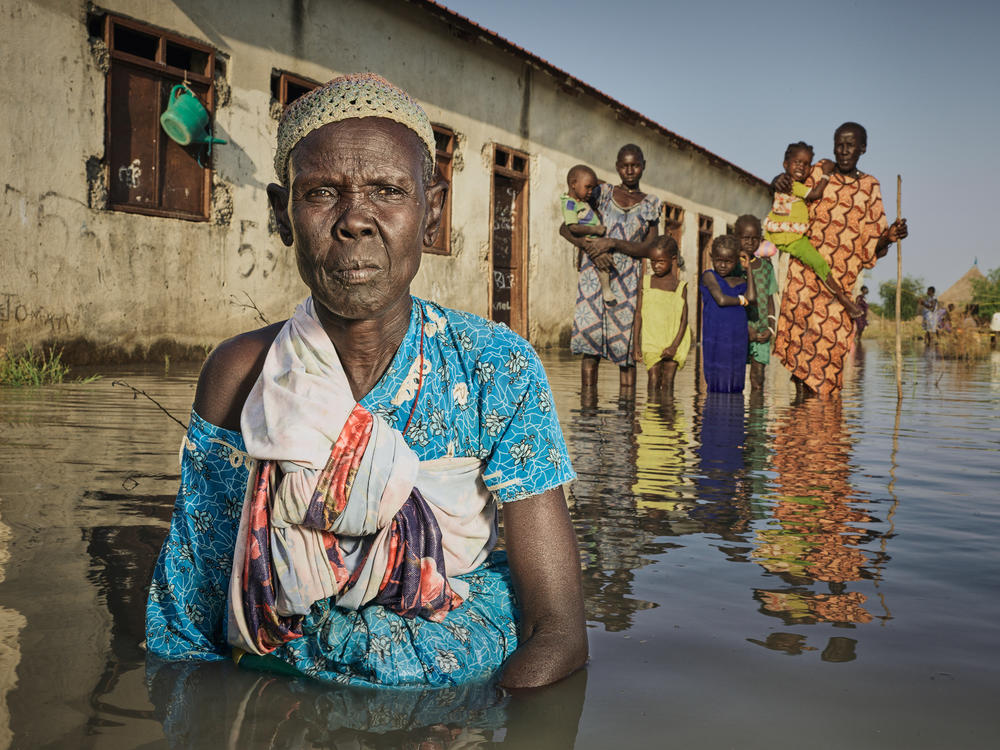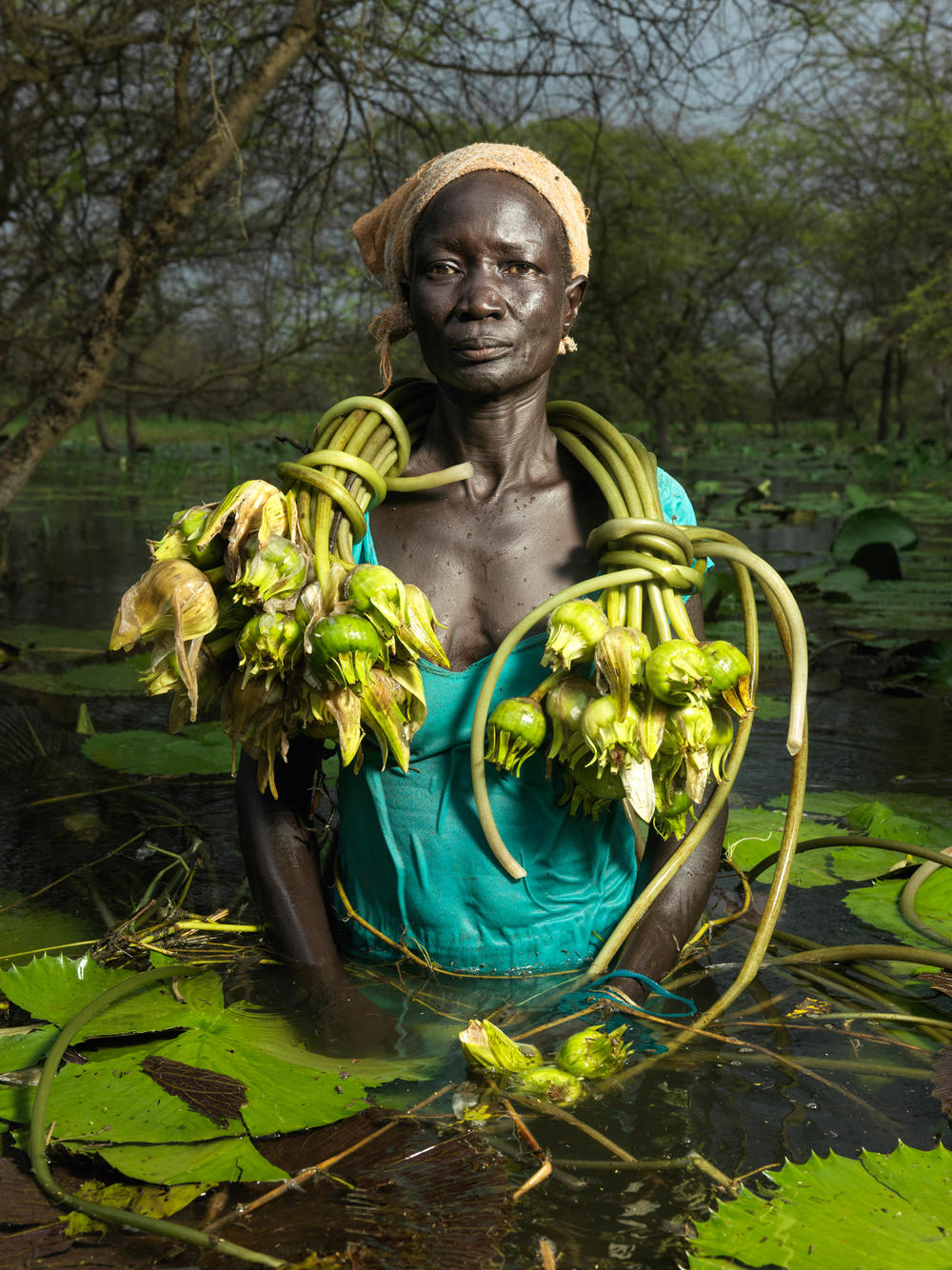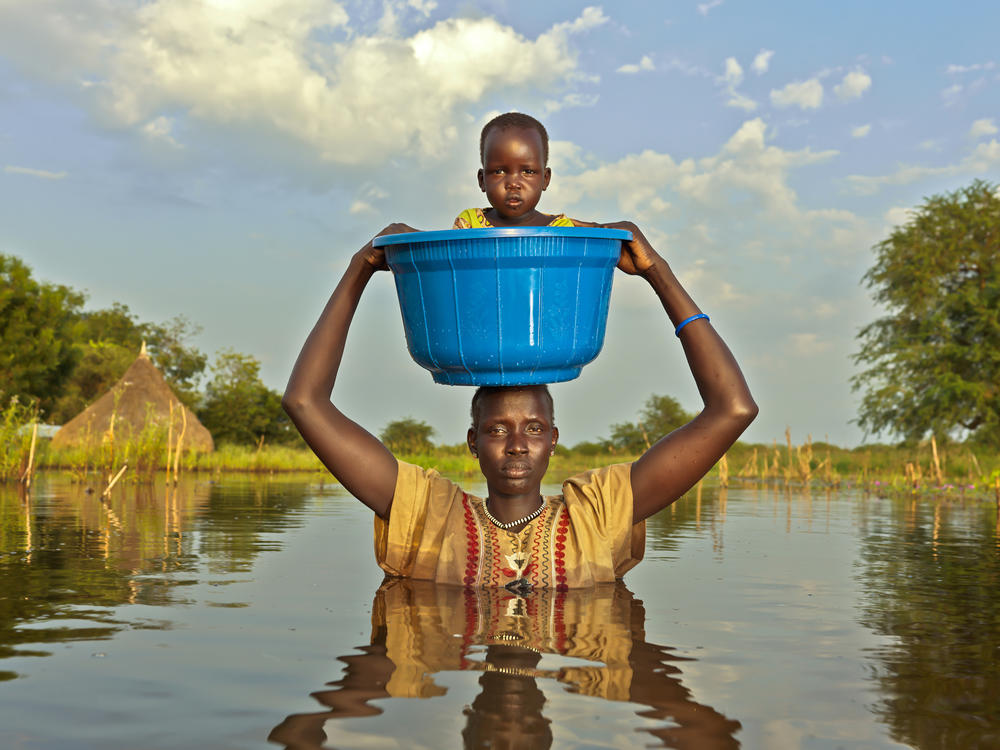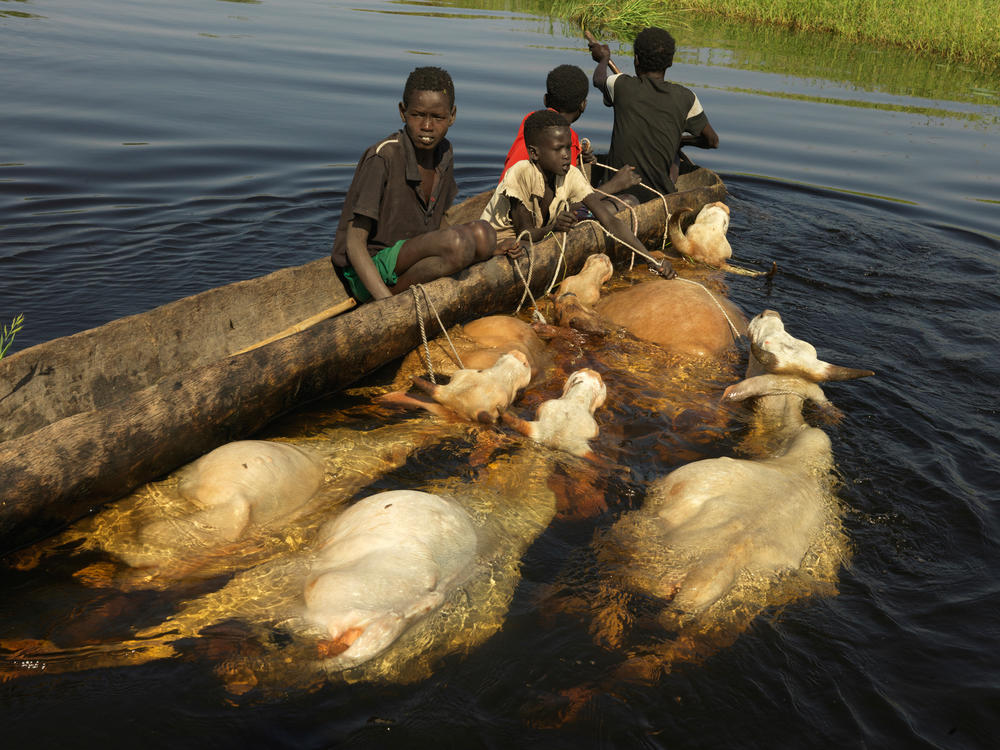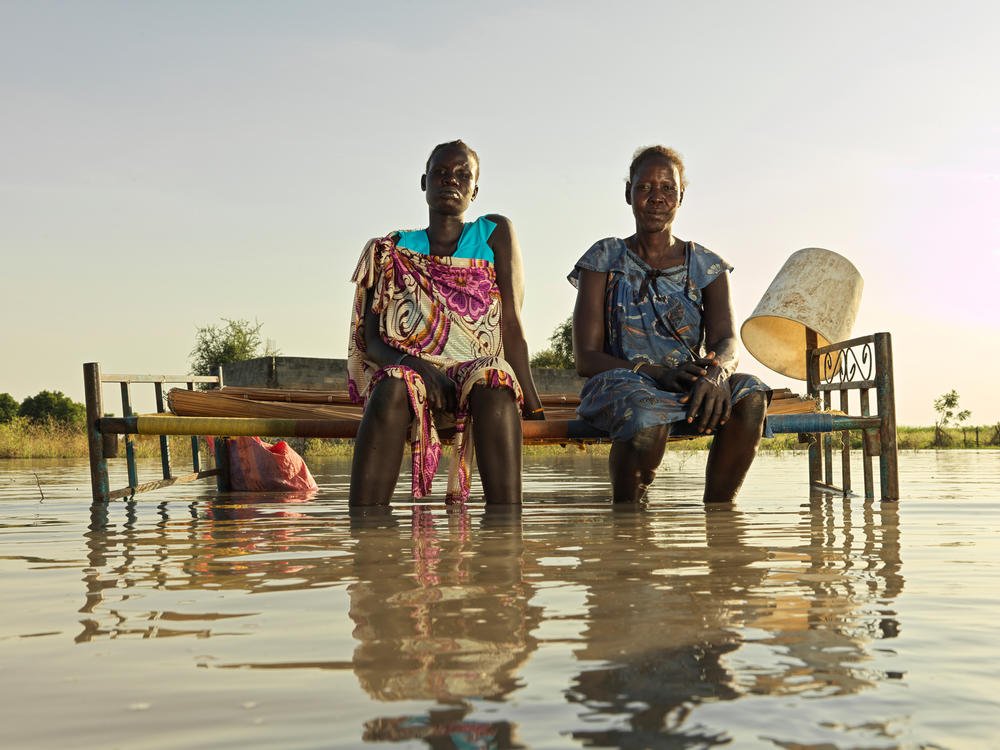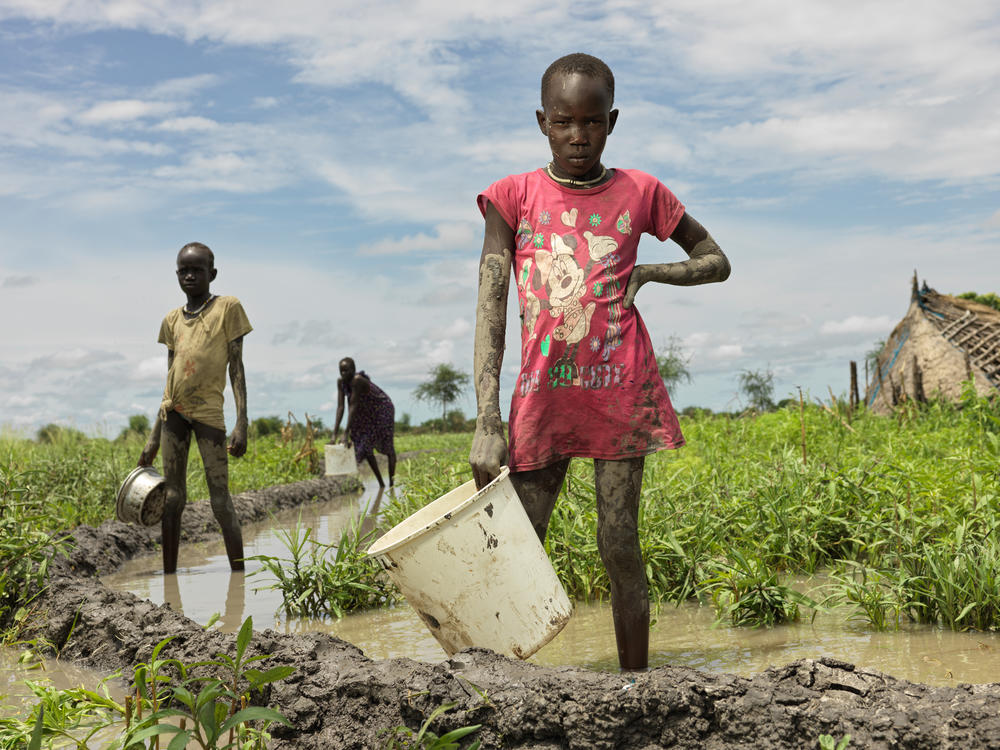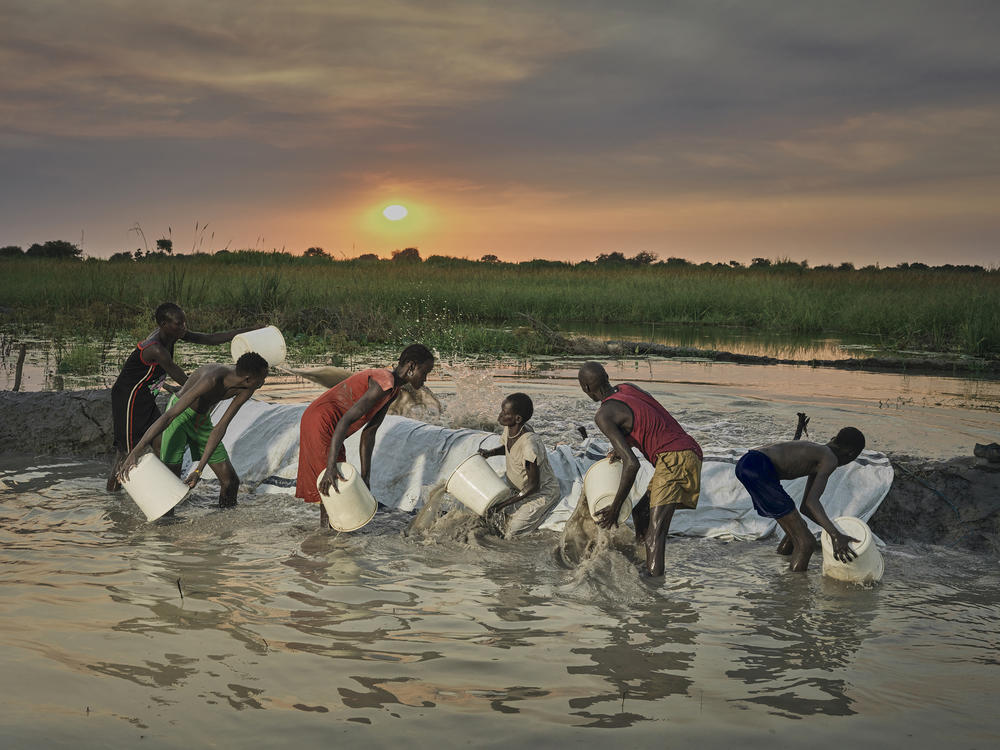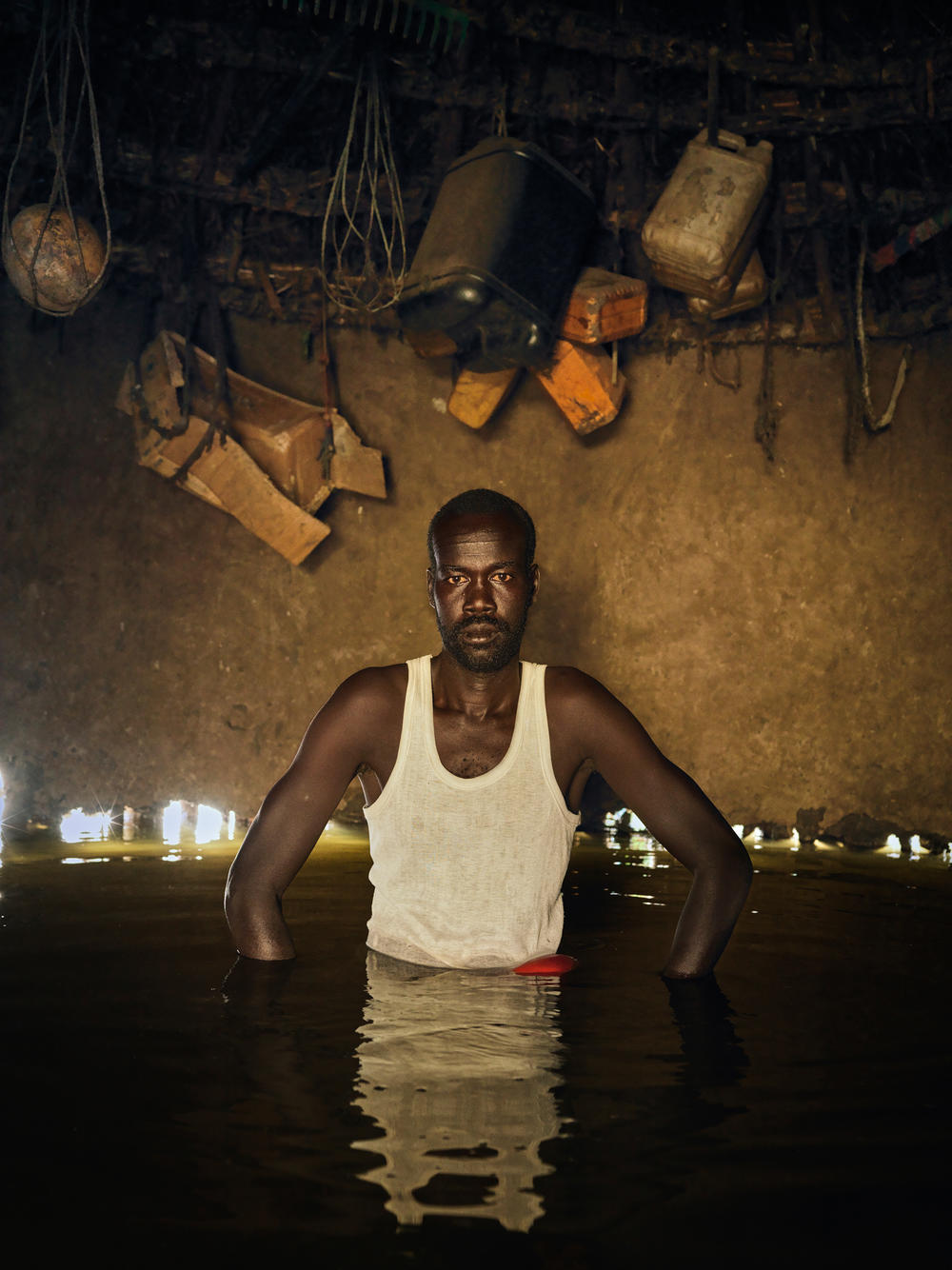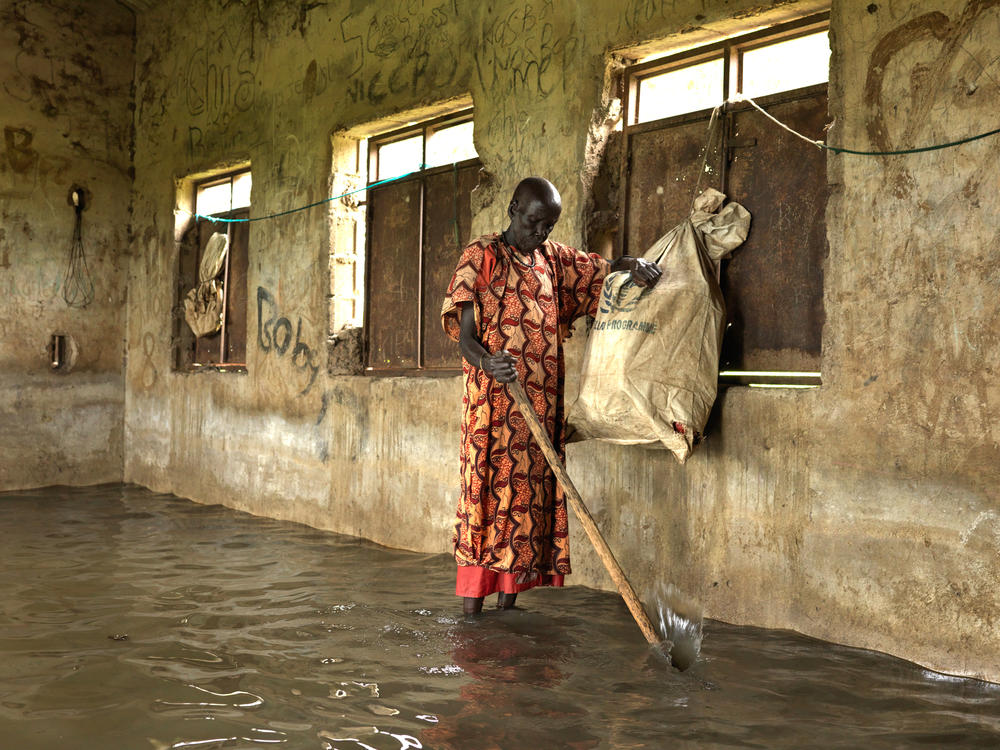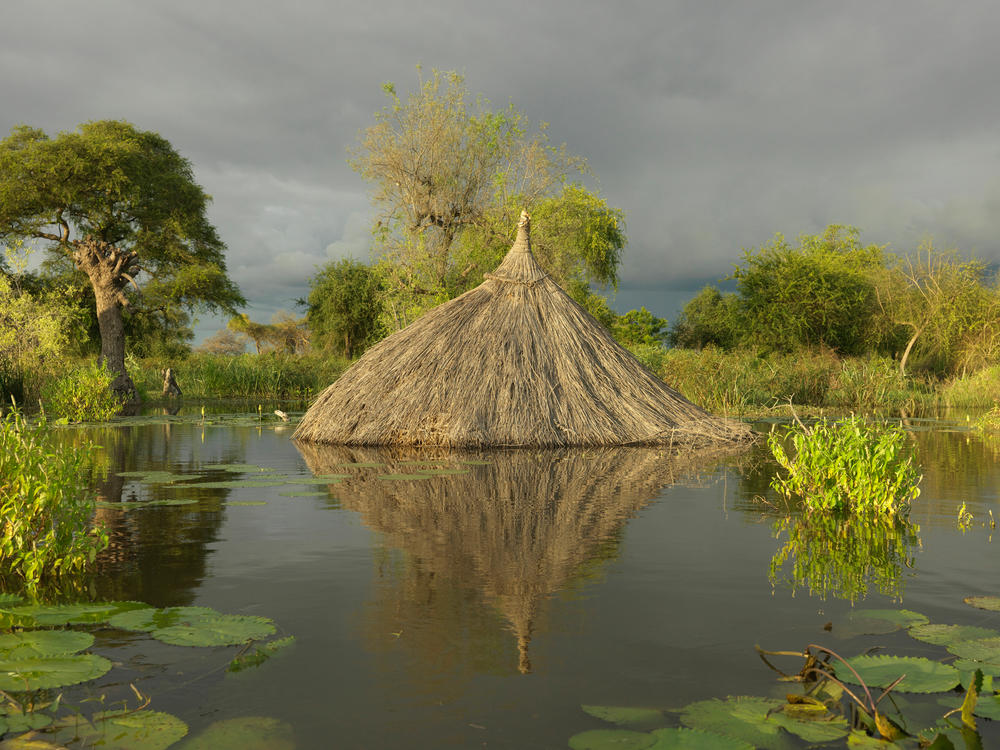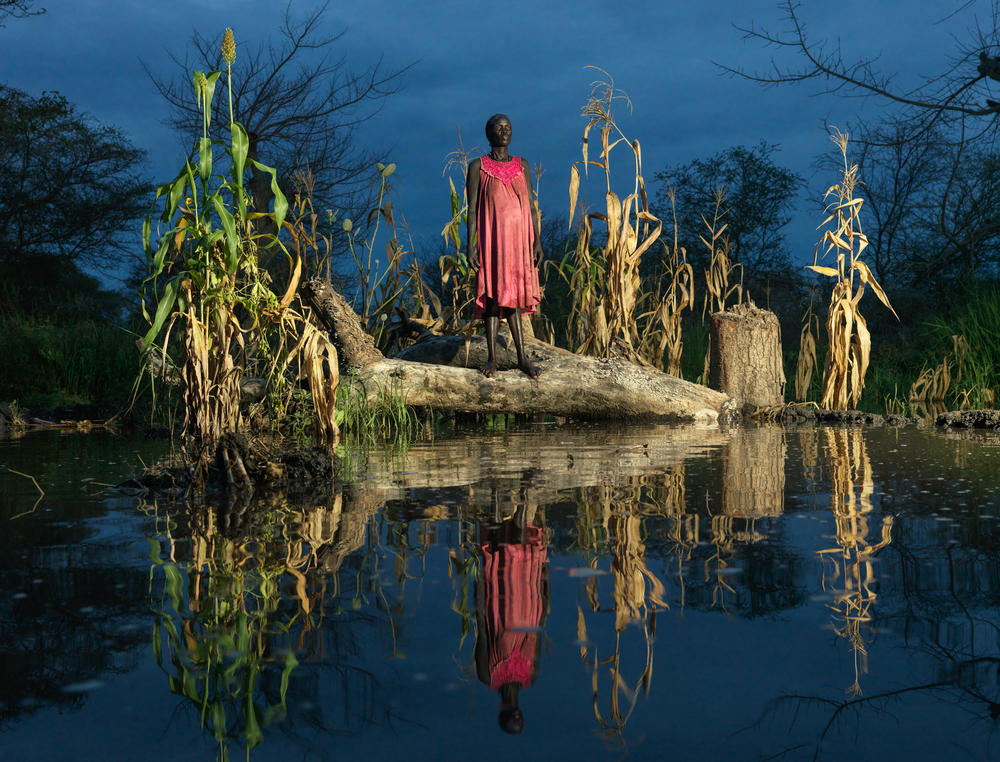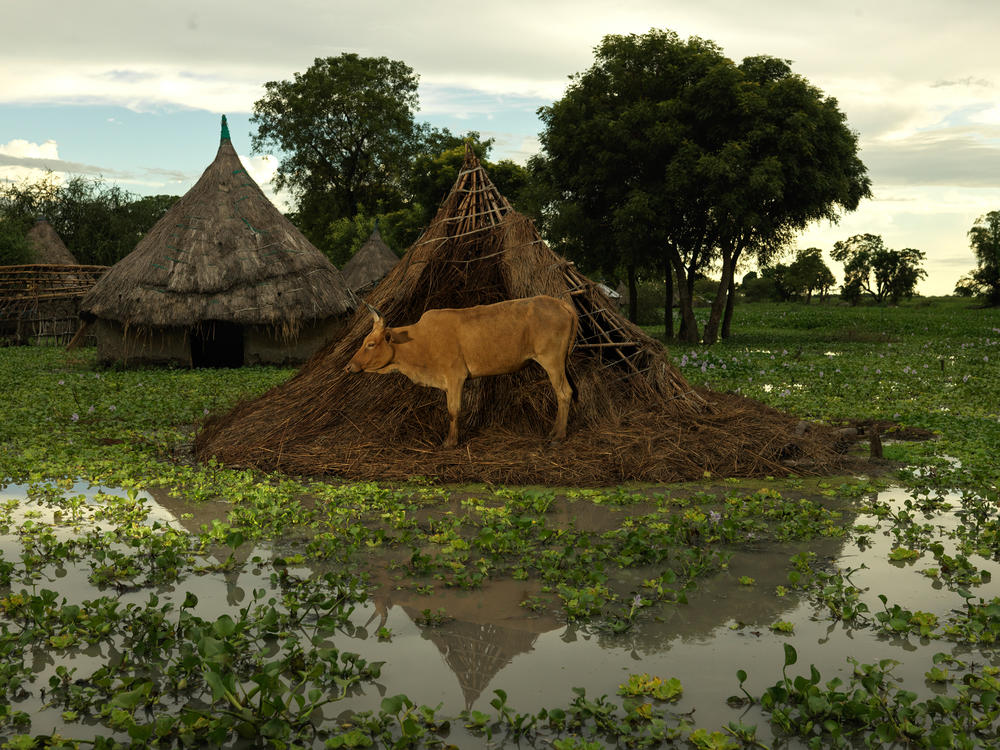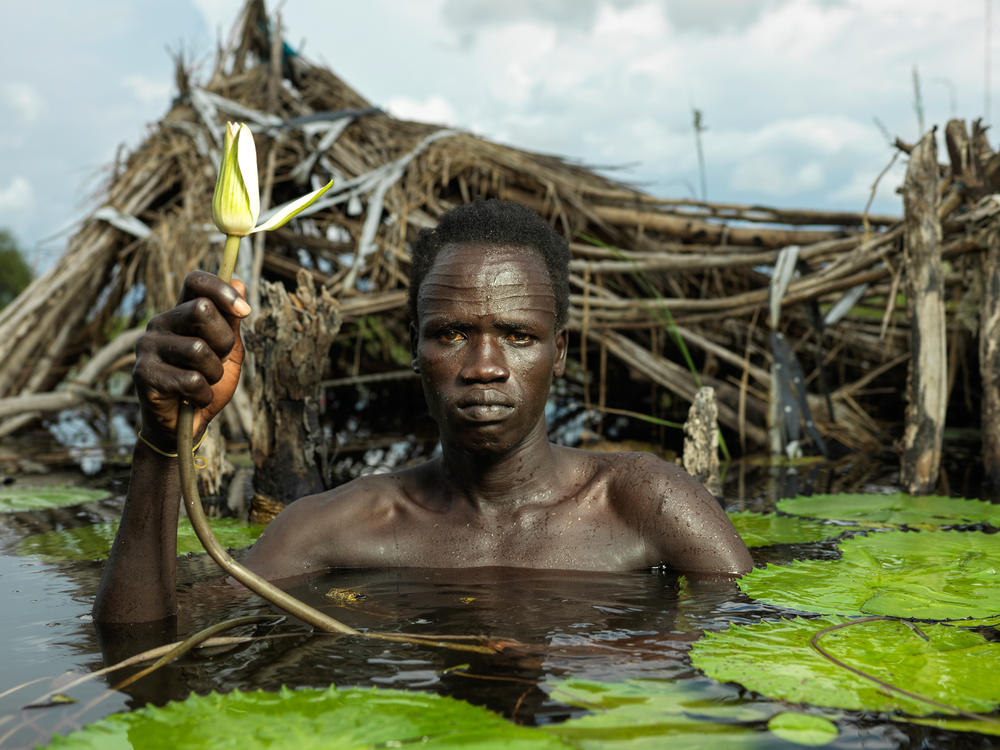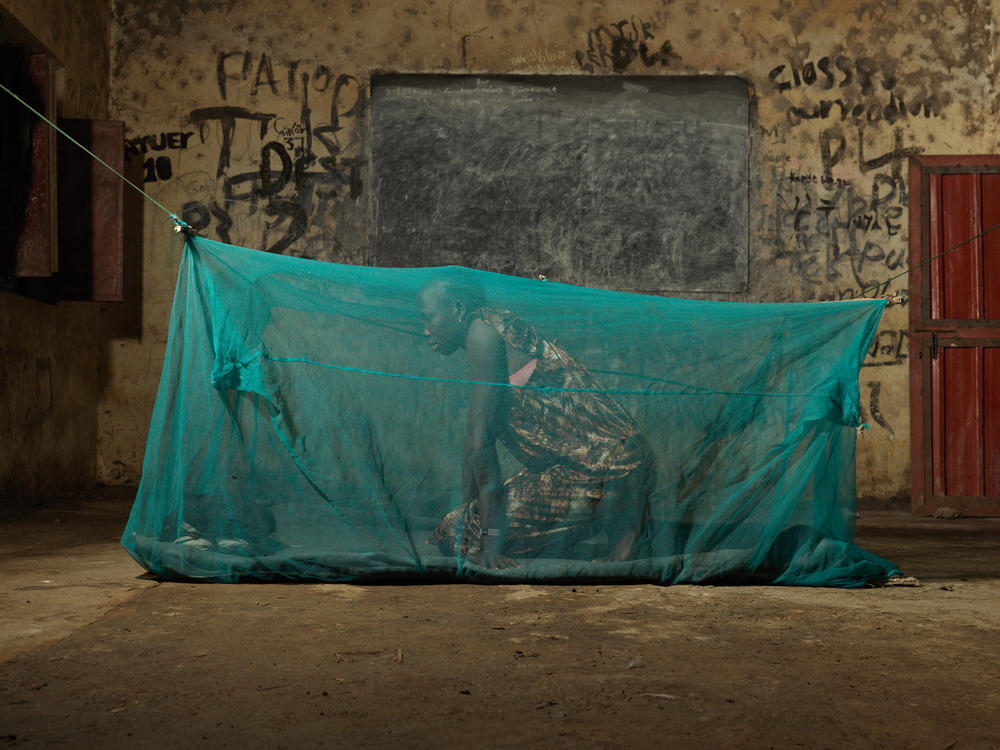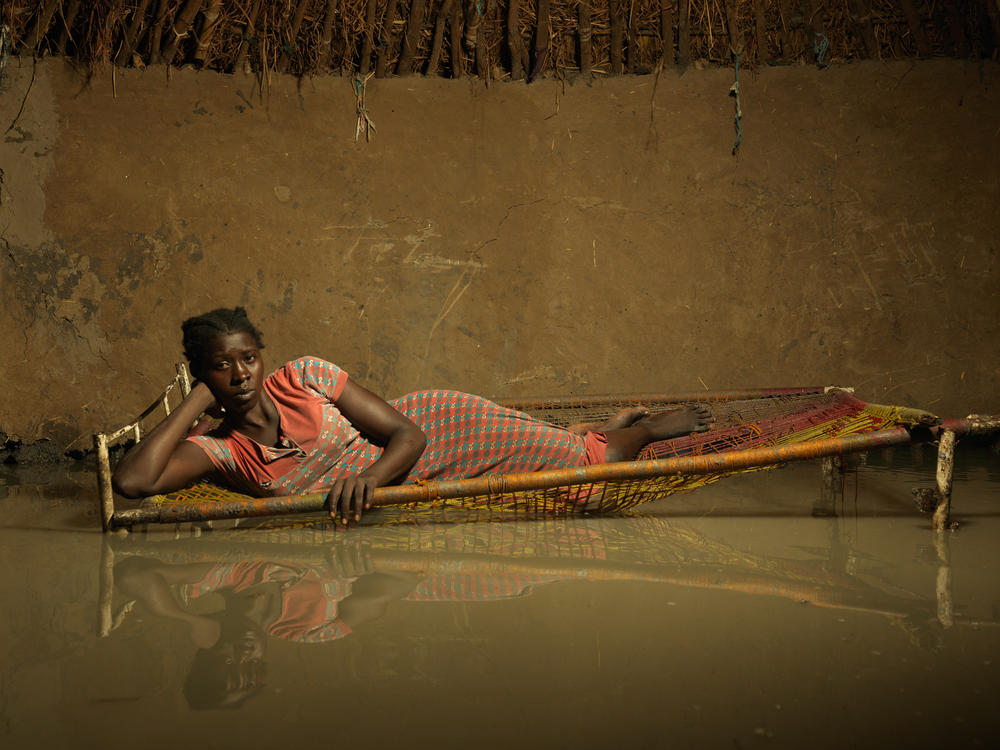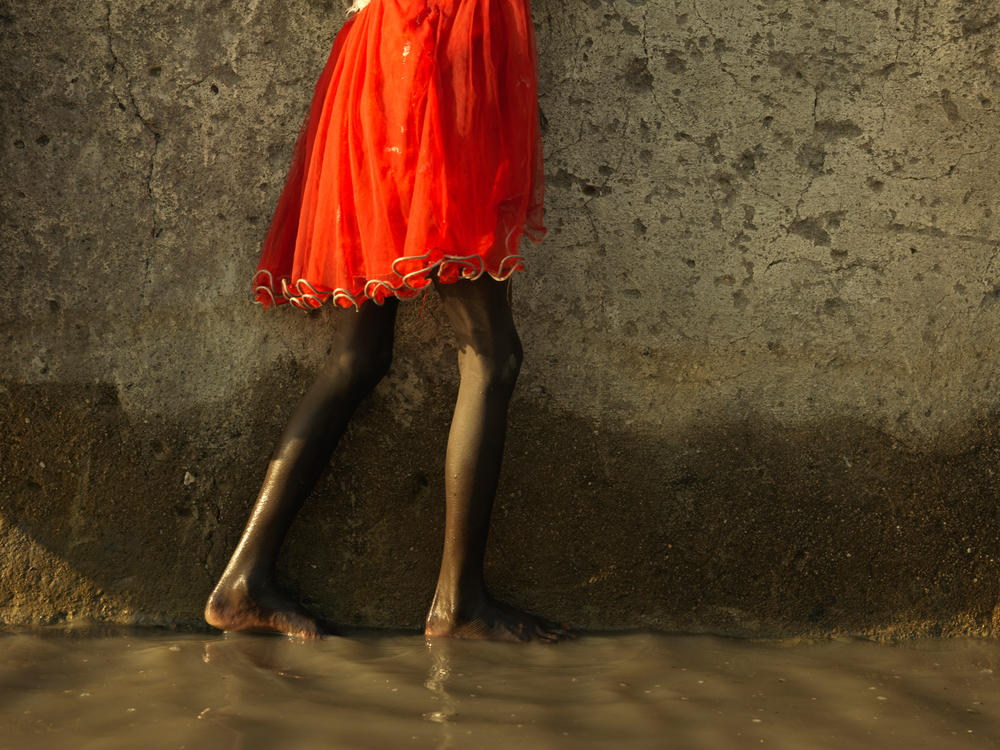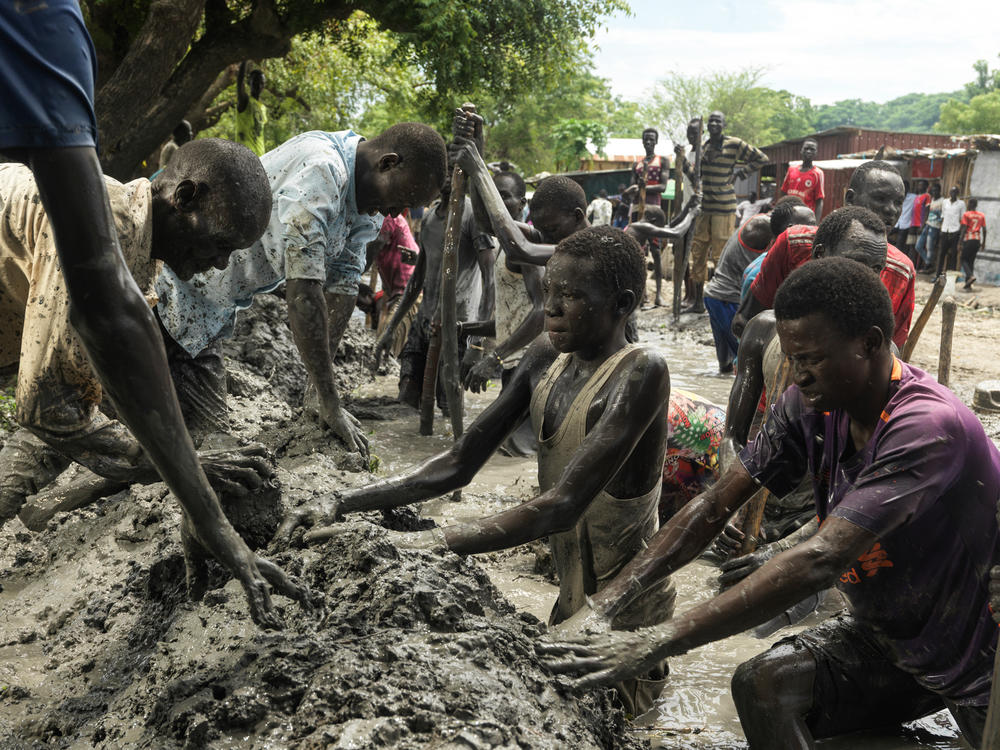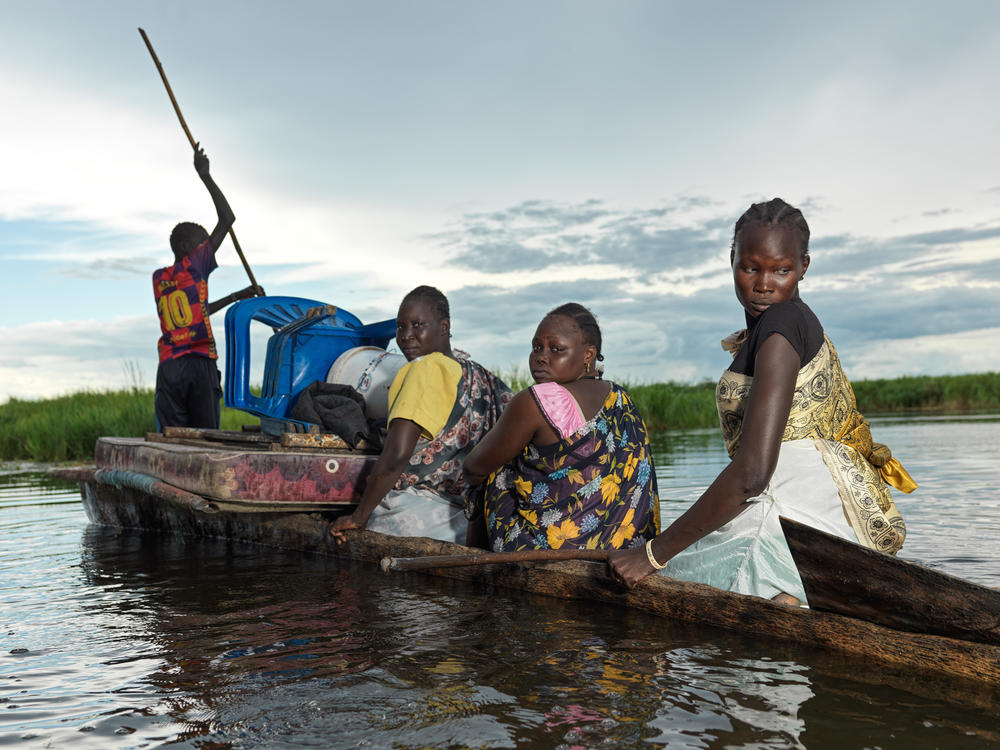Section Branding
Header Content
Prize-winning photos capture the grit and suffering of flood survivors in South Sudan
Primary Content
It's a striking image: A woman stands in a pond of waterlilies, with bundles of lily bulbs and their thick stems wrapped around her shoulders like a cape. With a dignified gaze pointed directly at the viewer, it almost looks like a regal portrait.
Her situation, however, is anything but. According to Peter Caton, who took the photo, this woman – who has been displaced by catastrophic floods in South Sudan — is collecting the bulbs to eat.
"It's the only source of food people can forage for now," he says. "They grind them into a powder to produce a paste that's edible. It's hard work."
This duality of resilience and hardship is what Caton, an award-winning British documentary photographer, has sought to capture in his series Unyielding Floods. Over the past couple of years, he has been photographing the devastating effects of extreme flooding brought on by climate change in South Sudan, which has struck the country three years in a row. According to UNHCR, the U.N. refugee agency, more than 700,000 people have been affected by this crisis.
In October, the series won first place in the 2021 International Photography Awards (IPA) in the environmental category. It is one of five photo awards that Unyielding Floods has won this year.
In a statement, IPA juror Cara Owsley, a visual journalist at the Cincinnati Enquirer said: "These images are heartbreaking but powerful. The photographer gives the viewer an informative but artistic view of the devastation in South Sudan."
For the series, commissioned by the global humanitarian group Action Against Hunger USA, Caton traveled to Jonglei State, South Sudan, in November 2020 and September 2021 to document the villagers' struggles. Heavy rains have caused the rivers to overflow — and the resulting floods have destroyed homes, submerged crops and drowned cattle, leaving people without shelter, food or a way to make a living.
According to UNHCR, many people continue to live in these flood-affected areas, in their damaged homes, in abandoned buildings or on plots of ever-shrinking higher ground. Aid agencies are helping to provide food aid, emergency shelter and other necessities. And local governments in South Sudan have set up projects to build dikes and redirect excess water through canals.
Caton, 45, has photographed for groups such as the World Food Programme, UNICEF and Save the Children, and his work has been featured in The Guardian, The Washington Post and Le Figaro. This conversation has been edited for length and clarity.
These images are so jarring — yet they also seem to be typical of what life has become there.
You see mothers wading through the water with their babies in buckets over their heads, presumably to keep them from falling into the water. Families in makeshift canoes — which are trees cut down and hollowed out — searching for higher ground. One family is towing cows, swimming alongside — this is how they transport them.
Some photos give new meaning to the phrase "bucket brigade."
People work day and night, battling against the rising water. The water keeps breaking through the mud dikes and washing them away. Everyone is tirelessly heaving buckets of water to try to get rid of the water and to save the dikes from collapsing. You'll hear gunshots in the middle of the night to alert the villagers that the dikes are failing, that they need to come to try to repair them, build them higher, to add more mud, to try to keep the water out. To no avail.
In one of the photos, you show a family with their buckets, and then behind them a beautiful sunset.
It is tragically poetic because the sun is setting on them as well. I asked the family to stop for a moment so I could take the picture. It shows their resilience, that they must keep trying.
Water is everywhere.
The water is relentless. There is a portrait of a man standing under a few feet of water in his home. His belongings are just hanging from the ceiling there — pots, pans, tools, whatever he has salvaged for safekeeping.
Action Against Hunger USA asked you to return to Jonglei State almost a year later in September to take more photos. What changes did you see?
In 2020, I photographed a school that was not inundated with water; it was a refuge. Five or six families squeezed in and lived in every classroom. Sometimes they would bring in their chickens, too.
Ten months later, no one can stay there [because the dikes broke and it is now flooded].
Your photos also document how much higher the water is this year.
One scene [of a submerged home from 2021] almost looks like an already existing pond or lake, but that is all new. Two years before, this was all dry land. Now the houses are submerged and the community has left. The roofs have collapsed under the weight of the water, crops can't grow and waterlilies are the new vegetation. People are living on grass mounds where they built some shelter.
And people are eating these waterlily bulbs to survive.
Hunger is widespread. The people used to grow sorghum and other crops, but they are all waterlogged and dead. I photographed one woman standing where she used to grow maize. She used to also have a kitchen garden. The floods took it all.
How did you manage to work in those conditions?
I'd be spending most if not all day up to the waist in water. The water is nasty, polluted with sewage. It stinks. I have rashes I can't get rid of.
Did so much water also lead to more mosquitoes — and malaria?
This was the worst mosquito situation I've seen in my life, and I started working in the tropics in 1999. Malaria is everywhere. It's a miracle I did not get it.
One day I was swallowing mosquitoes, coughing so much I had to abandon work midday to take cover. The people there somehow found a tailor to stitch a suit made out of mosquito nets for me, with a hood to cover my head and cover my hands. Without it, I don't think I would have been able to continue the shoot.
What do the people do to protect themselves?
They have no option. You can see in one photo [below] how a woman has created a makeshift personal space from a mosquito net.
How do people react to your taking photos of them? Do you show them the photos?
I try as often as I can to show them the digital images. They say, go back to your country and tell them what is happening here. People need to know what is going on.
This is a tragedy the world seems oblivious to. Do you feel you are making a difference?
If I don't take these photos, who will? Who will see this? This is part of my activism, to show people what is happening.
Diane Cole writes for many publications, including The Wall Street Journal and The Washington Post. She is the author of the memoir After Great Pain: A New Life Emerges. Her website is DianeJoyceCole.com.
Copyright 2021 NPR. To see more, visit https://www.npr.org.
